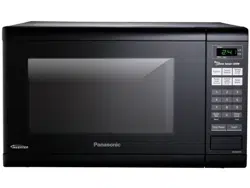Documents: Go to download!
User Manual
- User Manual - (English)
- FAQ - Frequently Asked Questions - (English)
- Specification Sheet - (English)
- Operation
- Defrosting Tips & Techniques
- Care and Cleaning of your Microwave oven
- Before requesting service
Table of contents
Owner Manual Microwave oven
Operation
Oven Components Diagram
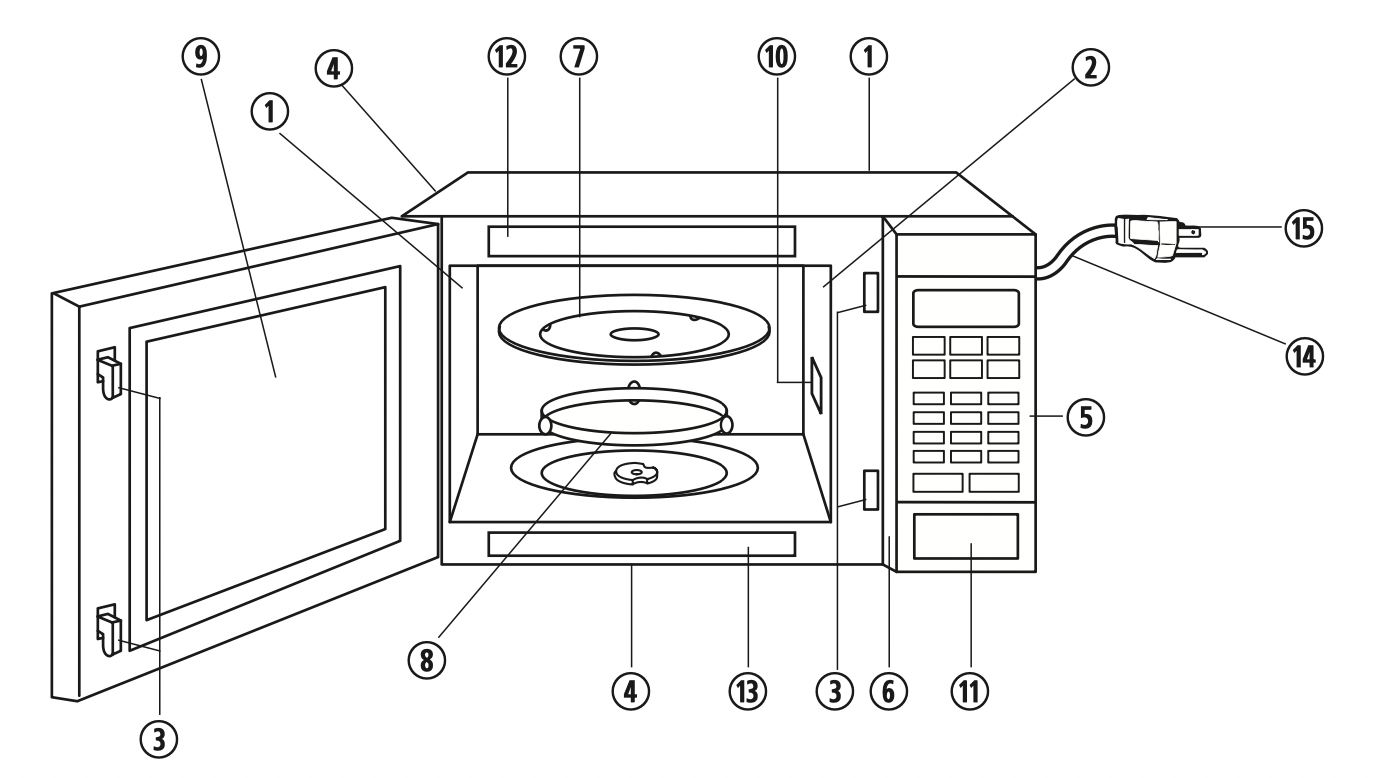
- External Air Vent
- Internal Air Vent
- Door Safety Lock System
- Exhaust Air Vent
- Control Panel
- Identification Plate
- Glass Tray
- Roller Ring
- Heat/Vapor Barrier Film
(do not remove) - Waveguide Cover
(do not remove) - Door Release Button
- Warning Label
- Menu Label
- Power Supply Cord
- Power Supply Plug
Control Panel

Beep Sound:
When a pad is pressed correctly, a beep will be heard.
If a pad is pressed and no beep is heard, the unit did not or cannot accept the instruction. When operating, the oven will beep twice between programmed stages. At the end of any complete program, the oven will beep 5 times.
Note: If no operation after cooking program setting, 6 minutes later, the oven will automatically cancel the cooking program. The display will return to clock or colon display.
Starting To Use Your Oven!
- Plug into a properly grounded electrical outlet.
The oven automatically defaults to the imperial measure system (oz/lb).
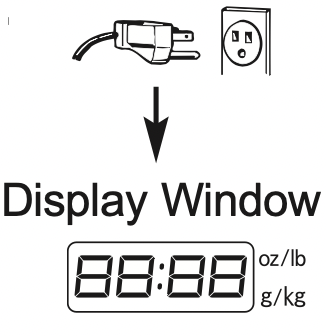
- If you wish to use metric system (g/kg):
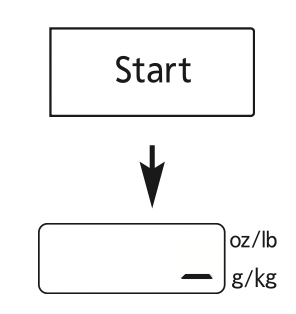
See other models: NN-CD565BMPQ TH-40G300K NE-21523 NN-SF564WMPQ NN-SN966SR
Press start to convert to metric. Verify your selection in the display window. - Press stop/reset.
Colon appears in the display window.

Setting the clock
Example: to set 11:25 a.m. or p.m.
- Press timer/clock twice.
Colon flashes.
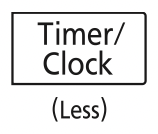
- Enter time of day using the number pads.
Time appears in the display window; colon continues flashing.
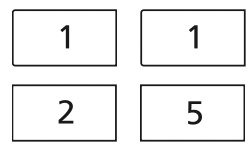
- Press timer/clock once.
Colon stops flashing; time of day is entered.

Notes:
- To reset the clock, repeat step 1-3.
- The clock will retain the time of day as long as the oven is plugged in and electricity is supplied.
- Clock is a 12-hour display.
- Oven will not operate while colon is flashing.
Child safety lock
This feature prevents the electronic operation of the oven until cancelled. It does not lock the door.
To set: Press start 3 times. “Child” appears in the display window. "Child" continues to be displayed until Child Lock is cancelled. Any pad may be pressed but the microwave will not start.

To cancel: Press stop/reset 3 times. The display will return to colon or time of day when Child Lock has been cancelled.

Note: You can set Child Lock feature when the display shows a colon or time of day.
Selecting Power & Cook Time
Example: To cook at P 6 (MediuM) power for 1 minute 30 seconds
- Press Power level until the desired power level appears in the display window.
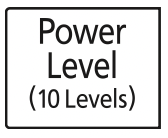
Press 5 times. - Set Cooking Time using number pads.

- Press start. Cooking will start.
The time in the display window will count down.

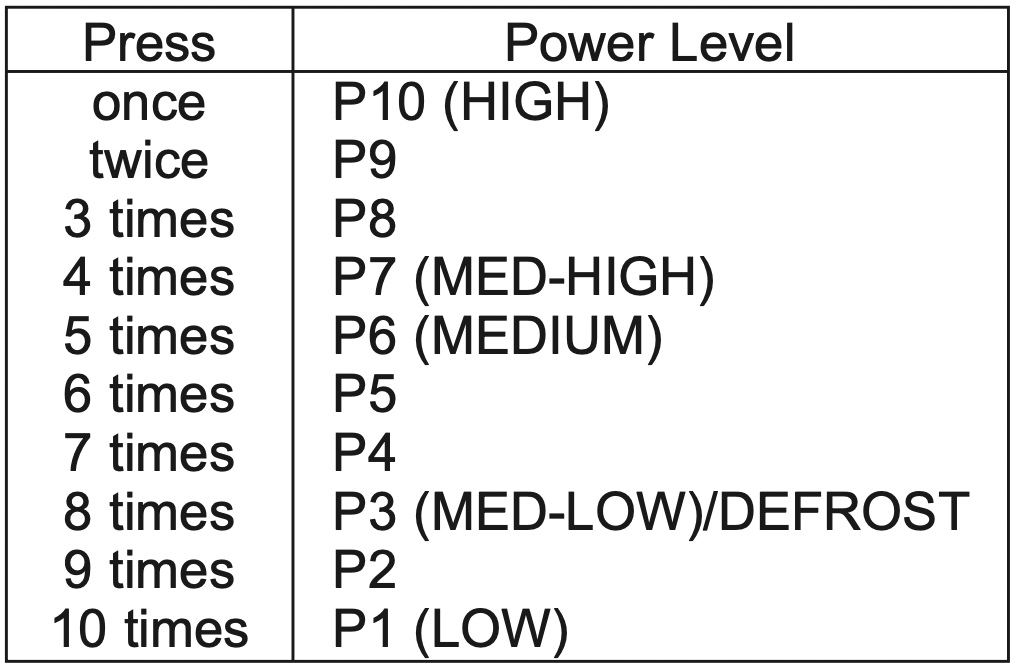
Notes:
- For more than one stage cooking, repeat steps 1 and 2 for each stage of cooking before pressing start Pad. The maximum number of stages for cooking is 3. When operating, two beeps will sound between each stage. Five beeps will sound at the end of the entire sequence.
- When selecting P10 (hIGh) power for the first stage, you may begin at step 2.
- When selecting P10 (hIGh) power, the maximum programmable time is 30 minutes. For other power levels, the maximum time is 99 minutes and 99 seconds.
- For reheating, use P10 (hIGh) for liquids, P7 (MED-hIGh) for most foods and P6 (MEDIUM) for dense foods.
- For defrosting, use P3 (MED-LOW).
Do not over cook. This oven requires less time to cook than an older unit. Over cooking will cause food to dry out and may cause a fire. A microwave oven’s cooking power tells you the amount of microwave power available for cooking.
Quick Min Feature
This feature allows you to set or add cooking time in 1 minute increments up to 10 minutes.
To set cooking time:
- Press Quick Min until the desired cooking time (up to 10 minutes) appears in the display window. Power Level is pre-set at P10.
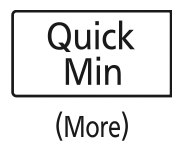
- Press Start. Cooking begins and the time will count down. At the end of cooking, 5 beeps sound.

Notes:
- If desired, you can use other power levels. Select desired power level before setting cooking time.
- After setting the time by quick Min Pad, you cannot use Number Pads.
- Quick Min Pad can be used to add more time during manual cooking.
Keep Warm feature
This feature will keep food warm for up to 30 minutes after cooking.
Example: To keep 2 cups of gravy warm for 10 minutes
- Press Keep Warm.
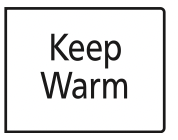
- Set warming time using number pads, up to 30 minutes.
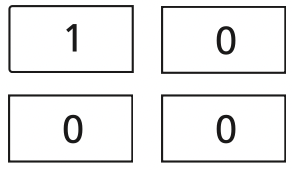
- Press start.
Keep Warm will start. The time in the display window will count down.

Note: Keep Warm can be programmed as the final stage after cook time/s have been manually entered. It cannot be used in combination with sensor or auto features.
Popcorn Feature
Example: to pop 3.5 oz. of popcorn
- Press once

Press Popcorn until the desired size appears in the display window.
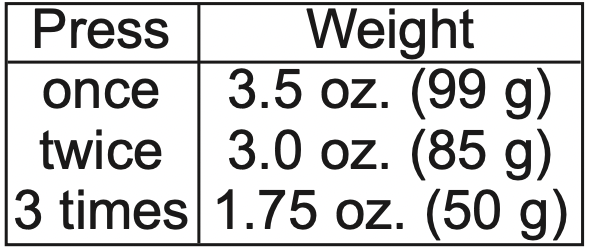
- (see More/less Feature) (* page 13)
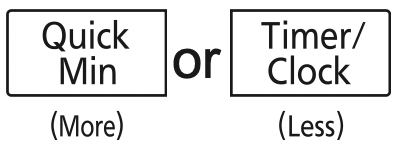
- Press start.
After several seconds, cooking time appears in the display window and begins to count down.

Notes on Popcorn feature:
- Pop one bag at a time.
- Place bag in oven according to manufacturers’ directions.
- Start with popcorn at room temperature.
- Allow popped corn to sit unopened for a few minutes.
- Open bag carefully to prevent burns, because steam will escape.
- Do not reheat unpopped kernels or reuse bag.
Note: If popcorn is of a different weight than listed, follow instructions on popcorn package. never leave the oven unattended. If popping slows to 2 to 3 seconds between pops, stop oven. overcooking can cause fire.
Remarks: When popping multiple bags one right after the other, the cooking time may vary slightly. This does not affect the popcorn results.
More/Less feature
For Popcorn: By using the More/less Pad, the programs can be adjusted to cook popcorn for a longer or shorter time if desired.
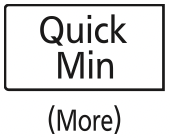 : Adds time
: Adds time
More 1 = Adds Approx. 10 secs.
More 2 = Adds Approx. 20 secs.
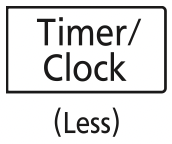 : Subtracts time
: Subtracts time
Less 1 = Subtracts Approx. 10 secs.
Less 2 = Subtracts Approx. 20 secs.
Press More/less pad before pressing start.
For sensor reheat/cook: Preferences for food doneness vary with each individual. After having used the sensor reheat/cook feature a few times, you may decide you would prefer your food cooked to a different doneness.
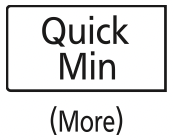 : Adds time
: Adds time
More = Adds Approx. 10% time
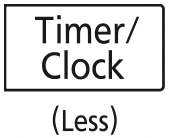 : Subtracts time
: Subtracts time
Less = Subtracts Approx. 10% time
Press More/less pad before pressing start.
Inverter turbo defrost feature
This feature allows you to defrost foods such as: meat, poultry and seafood simply by entering the weight.
Example: To defrost 1.5 pounds of meat
Place food on microwave safe dish.
- Press inverter turbo defrost.
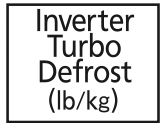
- Enter weight of the food using the number pads.

- Press start. Defrosting will start. The time will count down. Larger weight foods will cause a signal midway through defrosting. If 2 beeps sound, turn over, rearrange foods or shield with aluminum foil.

Conversion chart: Follow the chart to convert ounces or hundredths of a pound into tenths of a pound. To use Inverter Turbo Defrost, enter the weight of the food in lbs. (1.0) and tenths of a lb. (0.1). If a piece of meat weighs 1.95 lbs. or 1 lb. 14 oz., enter 1.9 lbs.

Note: The maximum weight for Inverter Turbo Defrost is 6 lbs. (3 kg).
Defrosting Tips & Techniques
Preparation for freezing:
- Freeze meats, poultry, and fish in packages with only 1 or 2 layers of food. Place wax paper between layers.
- Package in heavy-duty plastic wraps, bags (labeled “For Freezer”), or freezer paper.
- Remove as much air as possible.
- Seal securely, date, and label.
To defrost:
- Remove wrapper. This helps moisture to evaporate. Juices from food can get hot and cook the food.
- Set food in microwave safe dish.
- Place roasts fat-side down. Place whole poultry breast-side down.
- Select power and minimum time so that items will be under-defrosted.
- Drain liquids during defrosting.
- Turn over (invert) items during defrosting.
- Shield edges and ends if needed. (See Cooking Techniques).
After defrosting:
- Large items may be icy in the center. Defrosting will complete during STANDING TIME.
- Let stand, covered, following stand time directions on page 15.
- Rinse foods indicated in the chart.
- Items which have been layered should be rinsed separately or have a longer stand time.

Sensor Reheat Feature
This sensor feature allows you to reheat cooked, refrigerated food without setting time. The oven simplifies programming.
Example: To reheat a plate of food
- Press sensor reheat.
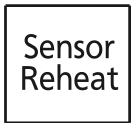
- (see More/less Feature) (*page 13)
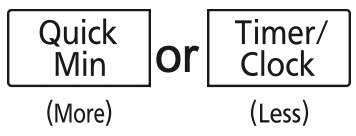
- Press start. Cooking starts.

Cooking is complete when 5 beeps sound. (When steam is detected by the Genius Sensor and 2 beeps sound, the remaining cooking time will appear in the display window.)
Note:
Casseroles - Add 3 to 4 tablespoons of liquid, cover with lid or vented plastic wrap. Stir when time appears in the display window.
Canned foods - Empty contents into casserole dish or serving bowl, cover dish with lid or vented plastic wrap. After reheating, let stand for a few minutes.
Plate of food - Arrange food on plate; top with butter, gravy, etc. Cover with lid or vented plastic wrap. After reheating, let stand for a few minutes.
Do not use sensor reheat:
- To reheat bread and pastry products. Use manual power and time for these foods.
- For raw or uncooked foods.
- If oven cavity is warm.
- For beverages.
- For frozen foods.
Sensor cook feature
This sensor feature allows you to cook food without setting time. The oven simplifies programming.
Example: To cook frozen entrées
- Press until the desired food number appears in the display window.

Press 5 times - (see More/less Feature) (*page 13)
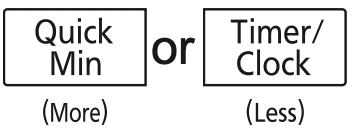
- Press start. Cooking starts.

Cooking is complete when 5 beeps sound. (When steam is detected by the Genius Sensor and 2 beeps sound, the remaining cooking time will appear in the display window.)
For the best results with the GENIUS SENSOR, follow these recommendations.
Before Reheating/Cooking:
- The room temperature surrounding the oven should be below 95 °F (35 °C).
- Food weight should exceed 4 oz. (110 g).
- Be sure the glass tray, the outside of the cooking containers and the inside of the microwave oven are dry before placing food in the oven. Residual beads of moisture turning into steam can mislead the sensor.
- Cover food with lid, or with vented plastic wrap. Never use tightly sealed plastic containers—they can prevent steam from escaping and cause food to overcook.
During Reheating/Cooking: DO NOT open the oven door until 2 beeps sound and cooking time appears on the Display Window. Doing so will cause inaccurate cooking since the steam from food is no longer contained within the oven cavity. Once the cooking time begins to count down, the oven door may be opened to stir, turn or rearrange foods.
After Reheating/Cooking: All foods should have a stand time.
Sensor Cook Chart
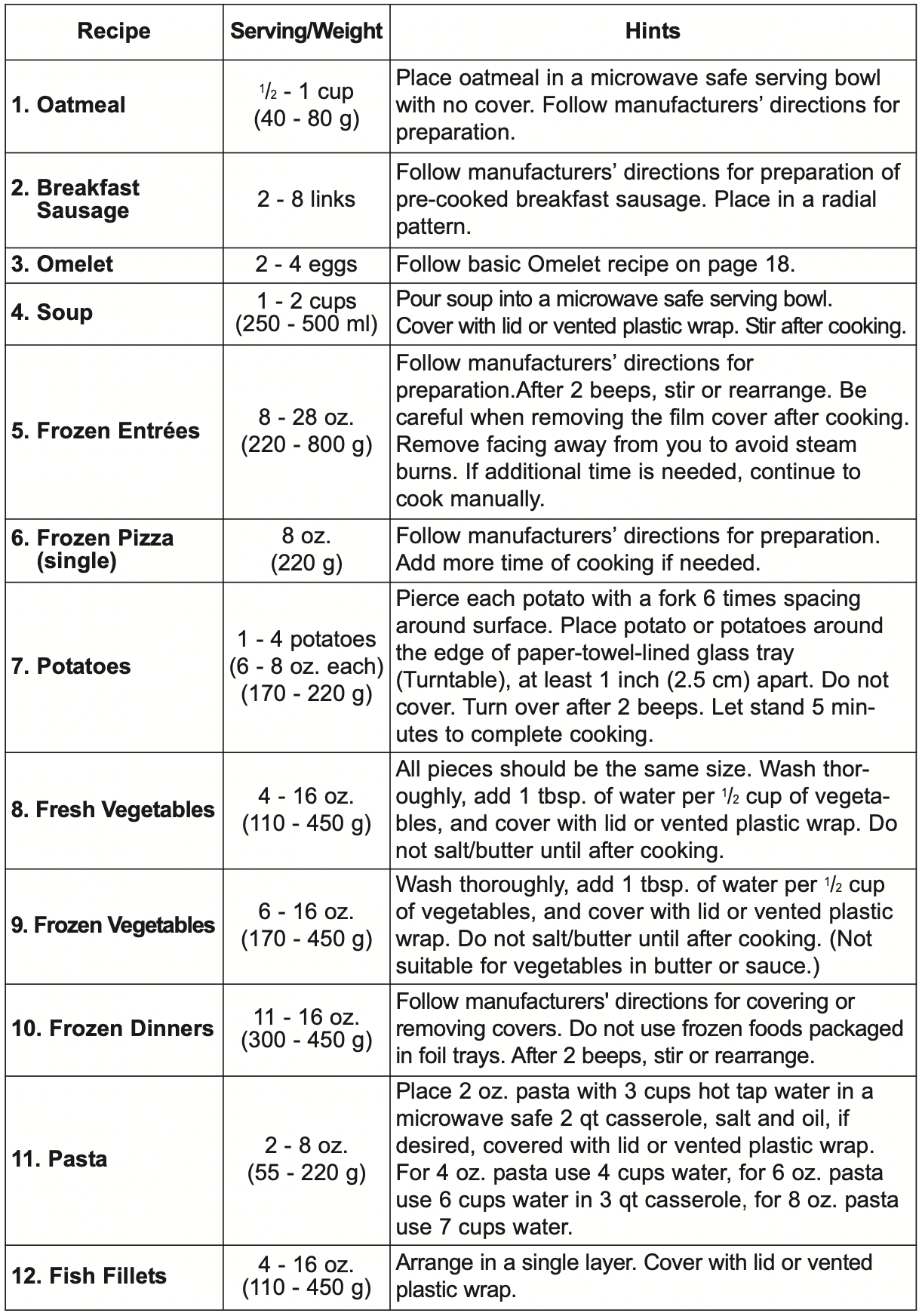
Timer Feature
This feature allows you to program the oven as a kitchen timer. It can also be used to program a standing time after cooking is completed and/or to program a delay start.
To use as a Kitchen timer:
Example: to count down 5 minutes.
- Press timer/clock once.

- Set desired amount of time using number pads.
(up to 99 minutes and 99 seconds).

- Press start. Time will count down without oven operating.

To set stand time:
Example: to cook at P6 power for 3 minutes, with stand time of 5 minutes.
- Enter the desired Power level (see page 12 for directions).
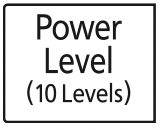
- Set desired cooking time using number pads.

- Press timer/clock once.
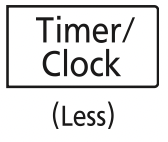
- Set desired amount of Stand Time using number pads. (up to 99 minutes and 99 seconds)

- Press start. Cooking will start.
After cooking, stand time will count down without oven operating.

Caution: If oven lamp is lit while using the timer feature, the oven is incorrectly programed. Stop oven immediately and re-read instructions.
To set delay start:
Example: To delay the start of cooking for 5 minutes, and cook at P6 power for 3 minutes.
- Press timer/clock once.
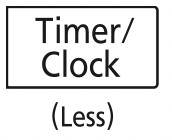
- Enter desired amount of delay time using number pads. (up to 99 minutes and 99 seconds)

- Enter the desired Power level (see page 12 for directions).
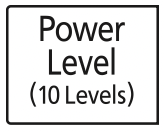
Press 5 times - Set desired cooking time using number pads.

- Press start. Delay time will count down. Then cooking will start.

Note:
- When each stage finishes, a two-beep signal sounds. At the end of the program, the oven will beep five times.
- If the oven door is opened during Stand Time, Kitchen Timer or Delay Time, the time on the display will continue to count down.
- Stand time and Delay start cannot be programmed before any automatic Function. This is to prevent the starting temperature of food from rising before defrosting or cooking begins. A change in starting temperature could cause inaccurate results.
Microwave Shortcuts
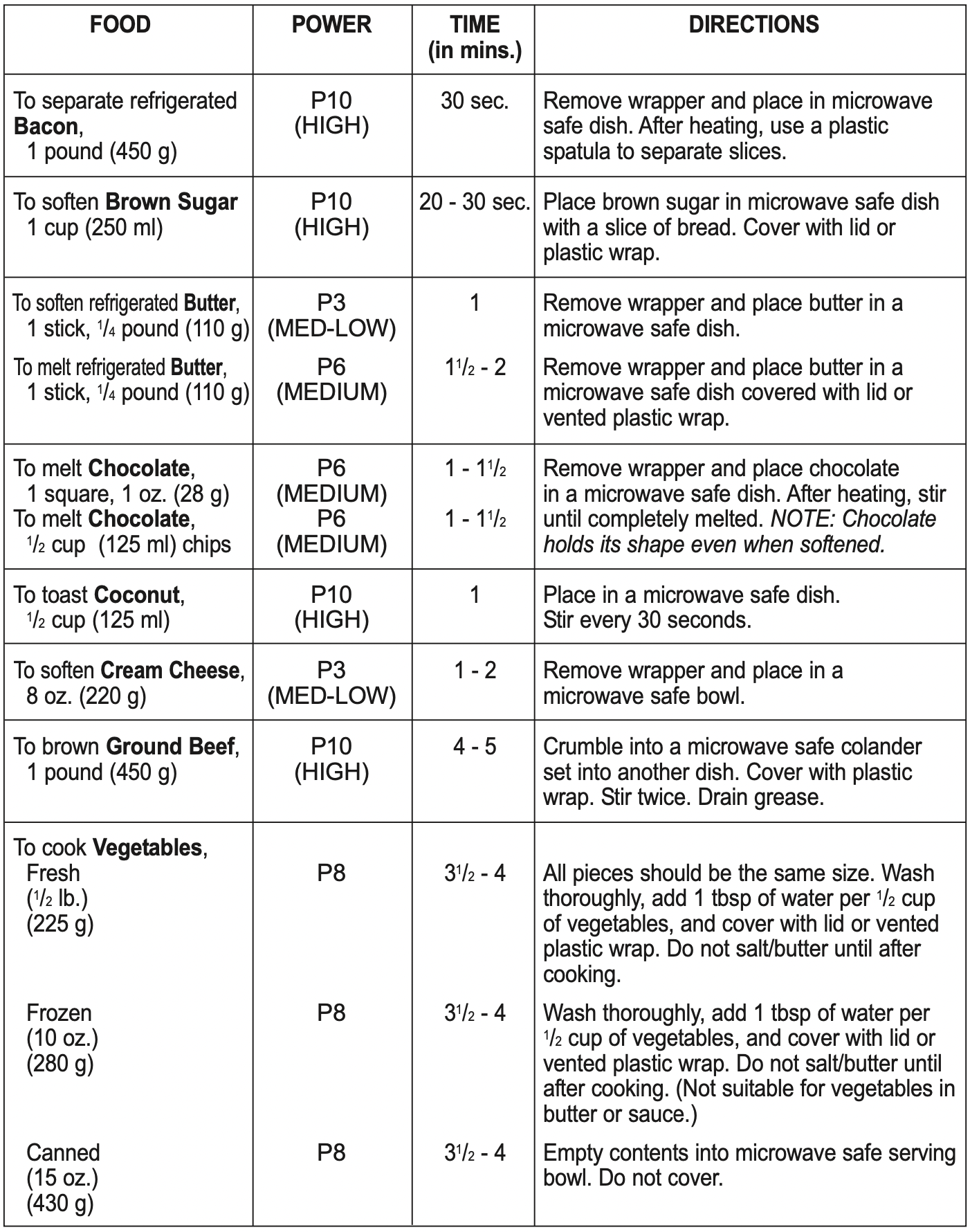
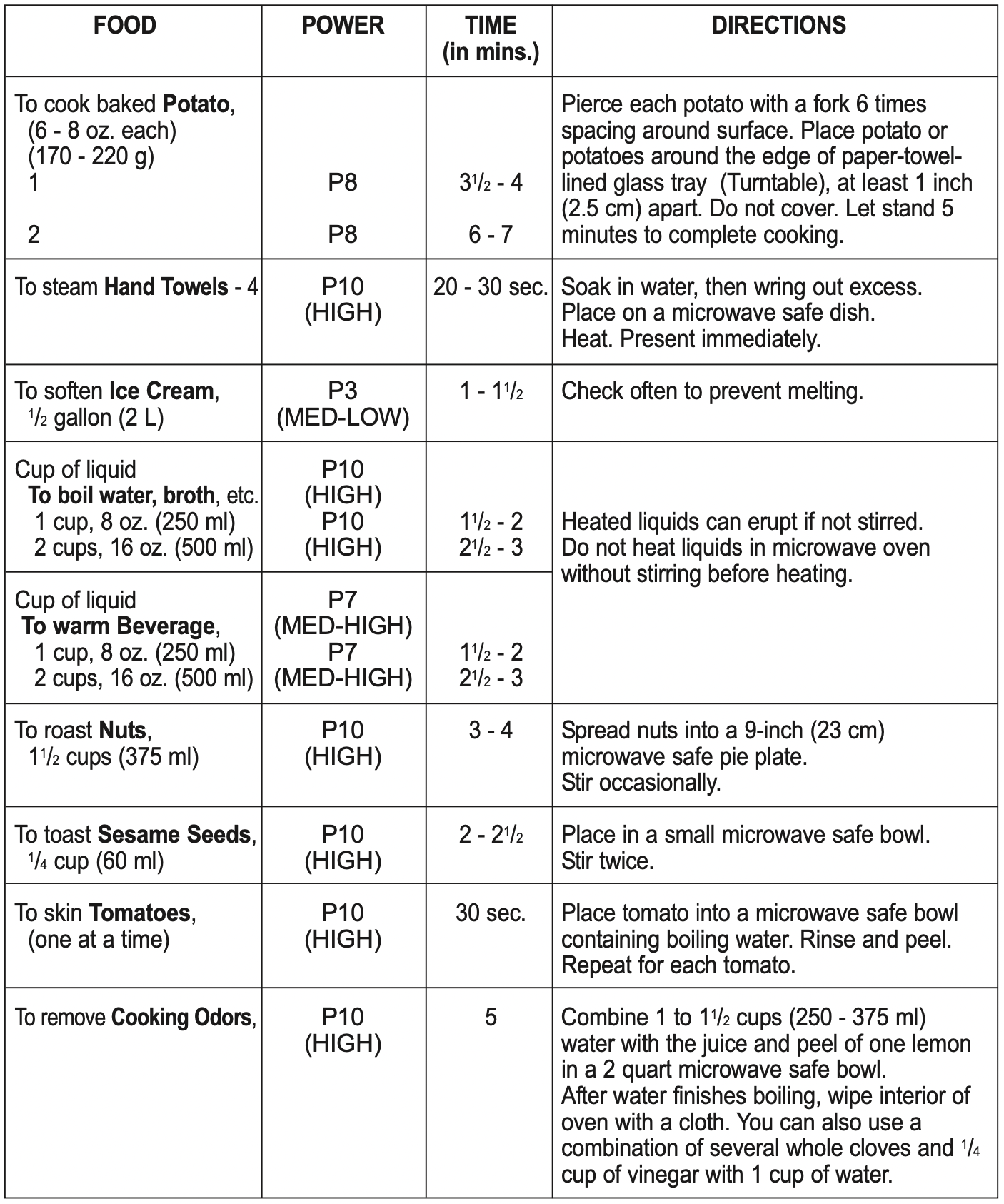
Food Characteristics
Bone and Fat
Both bone and fat affect cooking. Bones may cause irregular cooking. Meat next to the tips of bones may overcook while meat positioned under a large bone, such as a ham bone, may be undercooked. Large amounts of fat absorb microwave energy and the meat next to these areas may overcook.
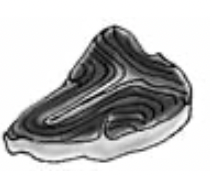
Density
Porous, airy foods such as breads, cakes or rolls take less time to cook than heavy, dense foods such as potatoes and roasts. When reheating donuts or other foods with different centers be very careful. Certain foods have centers made with sugar, water, or fat and these centers attract microwaves (For example, jelly donuts). When a jelly donut is heated, the jelly can become extremely hot while the exterior remains warm to the touch. This could result in a burn if the food is not allowed to cool properly in the center.
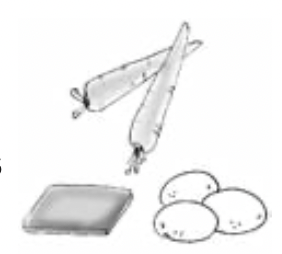
Quantity
Two potatoes take longer to cook than one potato. As the quantity of the food decreases so does the cooking time. Overcooking will cause the moisture content in the food to decrease and a fire could result. Never leave microwave unattended while in use.
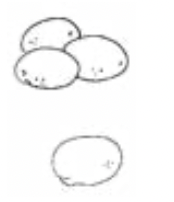
Shape
Uniform sizes heat more evenly. The thin end of a drumstick will cook more quickly than the meaty end. To compensate for irregular shapes, place thin parts toward the center of the dish and thick pieces toward the edge.

Size
Thin pieces cook more quickly than thick pieces.
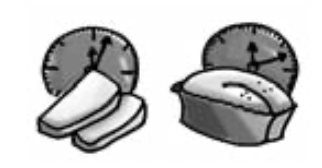
Starting Temperature
Foods that are at room temperature take less time to cook than if they are chilled, refrigerated, or frozen.

Cooking Techniques
Piercing
Foods with skins or membranes must be pierced scored or have a strip of skin peeled before cooking to allow steam to escape. Pierce clams, oysters, chicken livers, whole potatoes and whole vegetables. Whole apples or new potatoes should have a 1-inch strip of skin peeled before cooking. Score sausages and frankfurters. Do not Cook/Reheat whole eggs with or without the shell. Steam build up in whole eggs may cause them to explode, and possibly damage the oven or cause injury. Reheating SLICED hard-boiled eggs and cooking SCRAMBLED eggs is safe.
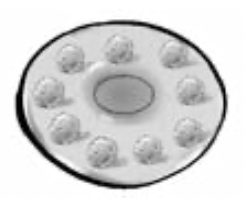
Browning
Foods will not have the same brown appearance as conventionally cooked foods or those foods which are cooked utilizing a browning feature. Meats and poultry may be coated with browning sauce, Worcestershire sauce, barbecue sauce or shake-on browning sauce. To use, combine browning sauce with melted butter or margarine and brush on before cooking. For quick breads or muffins, brown sugar can be used in the recipe in place of granulated sugar, or the surface can be sprinkled with dark spices before baking.

Spacing
Individual foods, such as baked potatoes, cupcakes and appetizers, will cook more evenly if placed in the oven equal distances apart. When possible, arrange foods in a circular pattern.

Covering
As with conventional cooking, moisture evaporates during microwave cooking. Casserole lids or plastic wrap are used for a tighter seal. When using plastic wrap, vent the plastic wrap by folding back part of the plastic wrap from the edge of the dish to allow steam to escape. Loosen or remove plastic wrap as recipe directs for stand time. When removing plastic wrap covers, as well as any glass lids, be careful to remove them away from you to avoid steam burns. Various degrees of moisture retention are also obtained by using wax paper or paper towels.
Shielding
Thin areas of meat and poultry cook more quickly than meaty portions. To prevent overcooking, these thin areas can be shielded with strips of aluminum foil. Wooden toothpicks may be used to hold the foil in place.
Caution is to be exercised when using foil. Arcing can occur if foil is too close to oven wall or door and damage to your oven will result.
Cooking time
A range of cooking time is given in each recipe. The time range compensates for the uncontrollable differences in food shapes, starting temperature, and regional preferences. Always cook food for the minimum cooking time given in a recipe and check for doneness. If the food is undercooked, continue cooking. It is easier to add time to an undercooked product. Once the food is overcooked, nothing can be done.
Stirring
Stirring is usually necessary during microwave cooking. Always bring the cooked outside edges toward the center and the less cooked center portions toward the outside of the dish.
Rearranging
Rearrange small items such as chicken pieces, shrimp, hamburger patties or pork chops. Rearrange pieces from the edge to the center and pieces from the center to the edge of the dish.
Turning
It is not possible to stir some foods to distribute the heat evenly. At times, microwave energy will concentrate in one area of the food. To help insure even cooking, these food need to be turned. Turn over large foods, such as roasts or turkeys, halfway through cooking.
Stand time
Most foods will continue to cook by conduction after the microwave oven is turned off. In meat cookery, the internal temperature will rise 5 °F to 15 °F (3 °C to 8 °C), if allowed to stand, tented with foil, for 10 to 15 minutes. Casseroles and vegetables need a shorter amount of standing time, but this standing time is necessary to allow foods to complete cooking to the center without overcooking on the edges.
Test for doneness
The same tests for doneness used in conventional cooking may be used for microwave cooking. Meat is done when fork-tender or splits at fibers. Chicken is done when juices are clear yellow and drumstick moves freely. Fish is done when it flakes and is opaque. Cake is done when a toothpick or cake tester is inserted and comes out clean.
About food safety and cooking temperature
Check foods to see that they are cooked to the United States Department of Agriculture’s recommended temperatures.
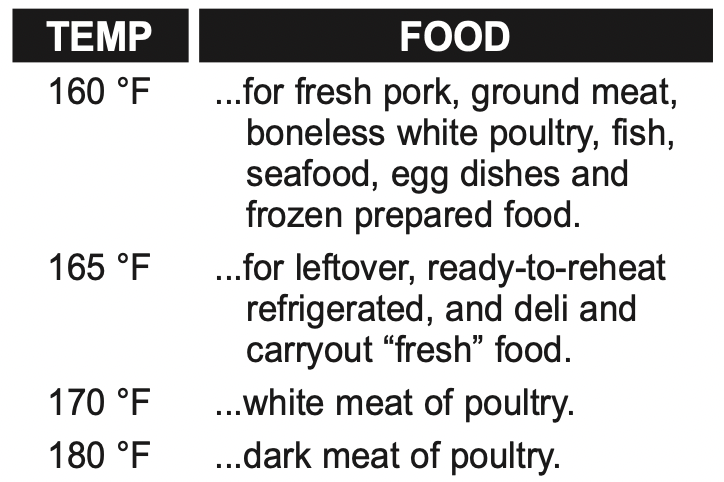
To test for doneness, insert a meat thermometer in a thick or dense area away from fat or bone. NEVER leave the thermometer in the food during cooking, unless it is approved for microwave oven use.
Care and Cleaning of your Microwave oven
Before cleaning: Unplug oven at wall outlet. If outlet is inaccessible, leave oven door open while cleaning.
After cleaning: Be sure to place the Roller Ring and the Glass Tray in the proper position and press stop/reset Pad to clear the Display.

Before requesting service
These things are normal:
|
The oven causesinterference with my TV. |
Some radio and TV interference might occur when you cook with the microwave oven. This interference is similar to the interference caused by small appliances such as mixers, vacuums, blow dryers, etc. It does not indicate aproblem with your oven. |
|
Steam accumulates on the oven door and warm air comes from the oven vents. |
During cooking, steam and warm air are given off from the food. Most of the steam and warm air are removed from the oven by the air which circulates in the oven cavity. However, some steam will condense on cooler surfaces such as the oven door. This is normal. After use, the oven should be wiped dry (see page 24). |
| Problem |
Possible cause |
Remedy |
|---|---|---|
| Oven will not turn on. | The oven is not plugged in securely. |
Remove plug from outlet, wait 10 seconds and re-insert. |
| Main circuit breaker or main fuse is tripped or blown. |
Reset main circuit breaker or replace main fuse. |
|
| There is a problem with the outlet. |
Plug another appliance into the outlet to check if it is working. |
|
| Oven will not start cooking. | The door is not closed completely. |
Close the oven door securely. |
| Start Pad was not pressed after programming. |
Press start Pad. |
|
| Another program is already entered into the oven. |
Press stop/reset Pad to cancel the previous program and enter new program. |
|
| The program is not correct. |
Program again according to the Operating Instructions. |
|
| Stop/Reset Pad has been pressed accidentally. |
Program oven again. |
|
| The Glass Tray wobbles. | The Glass Tray is not positioned properly on the Roller Ring or there is food under the Roller Ring. |
Take out Glass Tray and Roller Ring. Wipe with a damp cloth and reset Roller Ring and Glass Tray properly. |
| When the oven is operating, there is noise coming from the glass tray. | The Roller Ring and oven bottom are dirty. |
Clean these parts according to care and cleaning of your Microwave oven (see page 24). |
| The word “Child” appears in the Display Window. |
The ChILD LOCK was activated by pressing start pad 3 times. |
Deactivate LOCK by pressing stop/reset pad 3 times. |
| The oven stops cooking and "h00", "h97" or "h98" appears in the display window. | The oven unit power supply source failed. |
Please contact an authorised Service Center (see page 26). |
